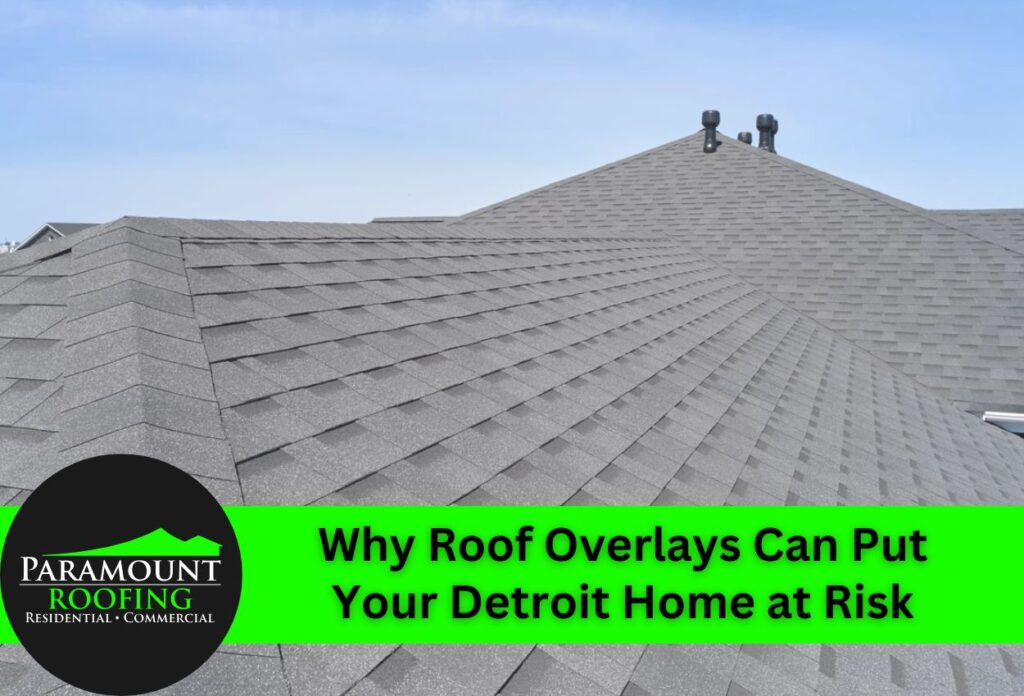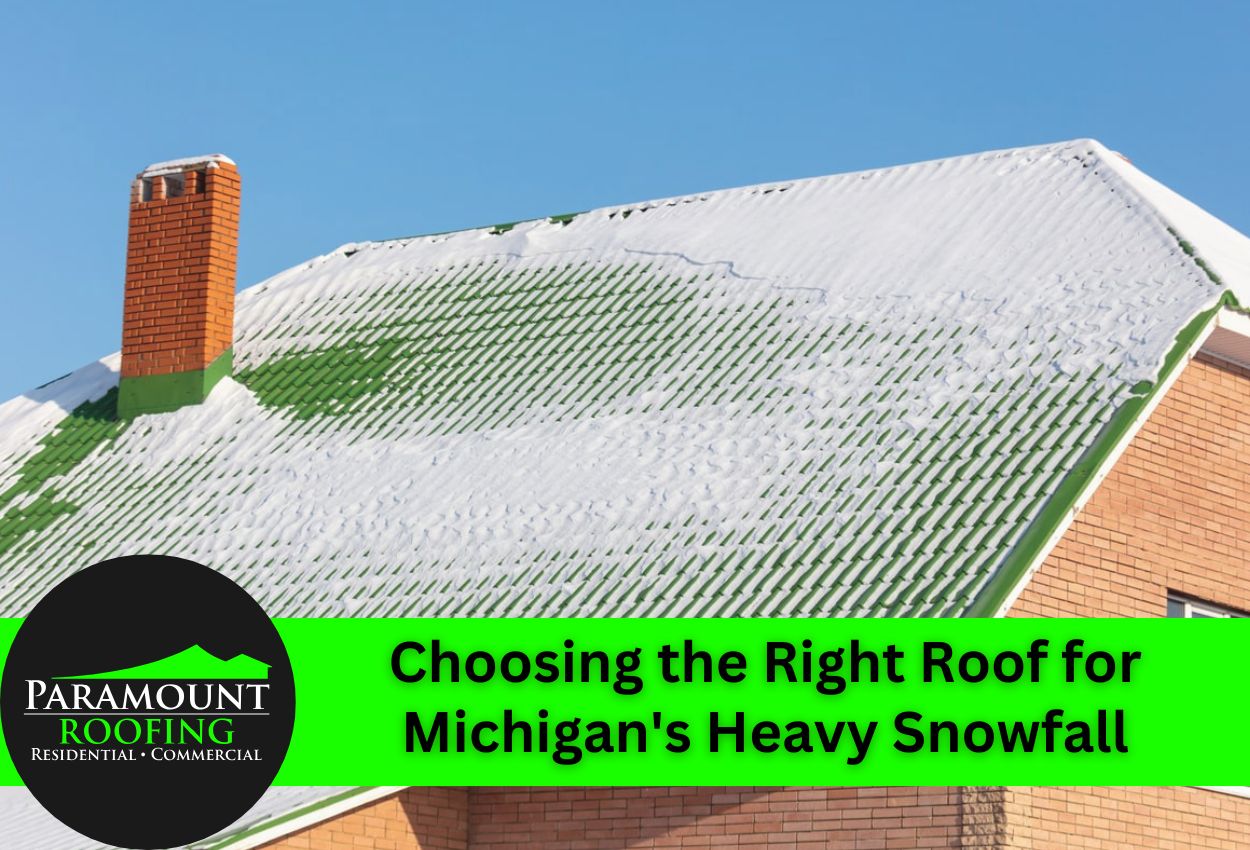
Roof overlays present an appealing solution for homeowners facing roofing problems. This approach involves installing new roofing materials directly over existing shingles or roofing systems, eliminating the need for a complete tear-off and disposal. Many property owners choose overlays because they appear to offer faster completion times and reduced labor expenses compared to full roof replacement.
The dangers of roof overlays often remain hidden until serious problems emerge. Adding new materials over damaged or deteriorating layers creates multiple structural and performance issues that can compromise your home’s safety and value. These roof overlay problems include excessive weight that exceeds structural capacity, trapped moisture leading to rot and mold, and concealed damage that continues deteriorating beneath the new surface.
Understanding roof overlay vs. tear-off options becomes critical when making roofing decisions. While overlays might seem cost-effective initially, they frequently result in structural damage and potential code violations. Property owners who ignore these risks may face expensive repairs, insurance complications, and safety hazards.
Recognizing signs of a failing roof overlay early can prevent catastrophic damage. These warning indicators include sagging sections, leaks, and visible deterioration that signal underlying problems requiring immediate attention.
Common Problems That Plague Roof Overlay Installations
Roof overlay problems frequently stem from moisture becoming trapped between the old and new roofing layers. This trapped moisture creates an environment where water cannot properly evaporate or drain away from the structure, and the existing roofing materials beneath the overlay begin experiencing accelerated rot and decay as moisture accumulates in spaces that were never designed to retain water.
When considering roof overlay vs. tear-off options, property owners must understand that overlays prevent proper inspection of the underlying roof deck and structural components. Hidden damage continues deteriorating while covered by new materials, creating structural damage that may not become apparent until extensive repairs are needed.
The reduced lifespan of new roofing materials installed over compromised substrates represents another significant concern. New shingles and roofing systems require stable, dry foundations to perform according to manufacturer specifications. Poor substrate conditions caused by existing damage, uneven surfaces, or moisture issues prevent new materials from achieving their expected longevity.
These conditions often lead to premature failure of the entire roofing system, creating roof overlay building code violations in areas where multiple layers exceed local regulations. Signs of failing systems include uneven surfaces, premature granule loss, and leaks that occur much sooner than anticipated.
Weight Limits and Structural Risks Your Home Faces
Additional roofing layers create significant weight that frequently exceeds the original design capacities of residential structures. Most homes are engineered to support a specific dead load from roofing materials, and adding new layers over existing ones can double or triple this weight. Each layer of asphalt shingles adds approximately 2 to 4 pounds per square foot, which translates to thousands of additional pounds across an entire roof that the structural framework never intended to bear.
The dangers of roof overlays become particularly obvious when considering how this excess weight affects rafters, trusses, and wall systems. Structural damage from roof overlay installations often begins gradually as wooden components experience stress beyond their engineering specifications. The additional load creates constant downward pressure that can cause rafters to sag, connections to loosen, and supporting walls to shift or crack over time.
Warning signs that indicate your roof structure is struggling under excessive weight include visible sagging along the roofline, doors and windows that stick or fail to close properly, and interior ceiling cracks that appear or worsen after overlay installation. These signs require immediate professional evaluation to prevent catastrophic structural failure.
Snow compounds these weight concerns significantly during the winter. The combination of multiple roofing layers and snow can exceed structural capacity, creating dangerous conditions that threaten the entire building.
Building Code Violations That Could Cost You
Many Detroit area homeowners unknowingly violate local building regulations when installing roof overlays. Most jurisdictions limit the number of roofing layers to 2 maximum, but property owners often remain unaware of these restrictions until problems arise. These roof overlay building code violations can result in serious legal and financial consequences that extend far beyond the initial installation.
Local regulations exist specifically to prevent the dangers of roof overlays from compromising structural integrity and safety. When inspectors discover unauthorized multiple layers during home sales, insurance claims, or routine inspections, property owners face mandatory tear-off requirements and complete roof replacement. The roof overlay problems that stem from code violations often require extensive work that costs significantly more than proper installation would have initially.
Insurance complications frequently arise when companies discover non-compliant roof installations during claim investigations. Many insurers refuse to cover damage related to code violations, leaving property owners financially responsible for repairs and liability issues.
The liability risks associated with non-compliant installations extend to potential injury claims if the structure fails. Understanding roof overlay vs. tear-off requirements according to local building codes helps property owners avoid these expensive violations and protect their investment while maintaining proper insurance coverage and legal compliance.
Making the Right Choice Between Overlay and Complete Replacement
Determining when roof overlays might be appropriate requires careful evaluation of existing conditions and long-term goals. Overlays only work when the current roofing system shows minimal damage, maintains structural integrity, and complies with local building codes regarding layer limitations. The underlying roof deck must remain completely sound without signs of rot, sagging, or water damage that could compromise the new installation.
The financial implications extend far beyond initial installation costs when comparing these approaches. While overlays appear less expensive initially, they frequently result in shortened lifespans, repeated repairs, and eventual complete replacement sooner than anticipated. Full tear-off installations typically provide longer service life, better warranty coverage, and improved home value that offset higher upfront investment.
Performance differences between these methods become apparent over time through energy efficiency, weather resistance, and maintenance requirements. Complete replacement allows proper insulation upgrades, ventilation improvements, and modern materials that deliver superior protection. Property owners who choose overlays often face recurring problems that diminish performance benefits and increase total ownership costs significantly.
Red Flags That Signal Your Roof Overlay Is Failing
Visual inspection can reveal several critical warning signs that indicate roof overlay systems are experiencing breakdown or underlying damage. Sagging sections along the roofline represent one of the most serious signs of failing roof overlay installations, often indicating that structural components cannot support the additional weight. Uneven surfaces, rippling, or buckling shingles suggest that the substrate beneath has deteriorated or shifted, creating instability that compromises the entire system.
Granule loss that occurs prematurely on new roofing materials points to problems caused by poor substrate conditions or trapped moisture. When shingles lose their protective granules within the first few years of installation, the underlying issues are accelerating normal wear patterns. Missing or damaged shingles that seem to fail without an obvious cause often indicate that structural damage from roof overlay weight loads is affecting the attachment points and substrate structural integrity.
Interior warning signs frequently provide the first indication that roof overlay systems are failing to protect the structure adequately. Water stains on ceilings or walls signal that moisture is getting in through multiple roofing layers and reaching interior spaces. These leaks are often difficult to trace and repair because water travels between the overlay and original roofing materials before entering the living space.
Energy efficiency problems, including increased heating and cooling costs, may indicate that installation issues are compromising insulation performance. When comparing roof overlay vs. tear-off options, these interior symptoms often make complete replacement the only viable solution.
Protecting Your Investment with Smart Roofing Decisions
Smart roofing decisions begin with asking the right questions when consulting with roofing contractors about your project. Property owners should inquire about the current number of existing roofing layers, the condition of the underlying roof deck, and whether the structure can safely support additional weight. Contractors should provide detailed explanations about roof overlays vs. tear-offs based on thorough structural assessments rather than cost considerations alone.
Essential questions include whether the proposed work complies with local building codes, what warranty coverage applies to overlay installations, and how the contractor plans to address any discovered damage during the project. Professional contractors will honestly discuss the dangers of roof overlays when existing conditions make them inappropriate, even when a tear-off represents a more expensive option. Understanding why specific recommendations are made helps property owners avoid roof overlay problems that could compromise their investment.
Homeowners can take proactive steps to maintain roof health and prevent overlay-related issues from developing. Regular inspections should focus on identifying signs of failing roof overlay systems, including granule accumulation in gutters, loose or missing shingles, and water stains that appear on interior surfaces. Proper ventilation maintenance prevents moisture buildup that accelerates structural damage from roof overlay installations.
Annual professional inspections help detect roof overlay, building code violations, or structural concerns before they become major problems. Maintaining detailed records of all roofing work, including permits and inspection reports, protects your investment and ensures compliance with local regulations while preserving insurance coverage and property value.
Explore Safer Roofing Options with Paramount Roofing
Are you considering a roof overlay for your Detroit home? Before making this decision, it’s important to understand the potential risks and long-term consequences associated with roof overlays. At Paramount Roofing, we prioritize the safety and satisfaction of our clients by offering evaluations and solutions tailored to each unique situation.
Protect your investment and ensure the longevity of your roof by consulting with our experienced professionals today. Call us now at (586) 690-0227 to schedule an inspection and discuss your roofing options. Trust Paramount Roofing to provide you with a solution that ensures peace of mind and the safety of your home.
 Free Estimate
Free Estimate
 Request Service
Request Service Locations
Locations 



